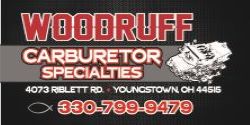When you test-fit the transmission by installing it flush to the bellhousing, it should seat fully. If you notice resistance as you approach about a half-inch or less before seating, and it will not relatively easily push all the way to the seated position, there is likely interference from the input shaft to the crank's pilot hole. There needs to be a small amount of clearance for the two parts Crankshaft and input shaft) to spin independent of each other while the clutch is disengaged. You can stuff a small ball of aluminum foil into the crank hole, assemble the parts, and then remove and measure the now-crushed foil to estimate the actual clearance or not.
I have trimmed several input shafts by using a cutoff disc and chamfering the leading edge, as you described. It will not hurt anything. Even if you run a pilot bushing, it does not compromise the input shaft's bearing surface, as it is just forward of that.
Drilling out the crankshaft can yield the same effective result, however there are internal oil passages in the crank going from the mains to the rods. Do you know that you won't drill into one? you can probably figure that out if you look carefully. If the motor is not apart, this becomes more difficult to determine. I had one crank that weeped oil through the pilot bushing onto my clutch. I cleaned it out with brake cleaner and compressed air and then sealed it with Permatex. It sealed it and it hasn't seeped since. I assumed it was due to the proximity of an internal rod oiling passage, but that is not verified scientifically. Questioning the science, is science.

 Thanks everyone for your input!
Thanks everyone for your input!














